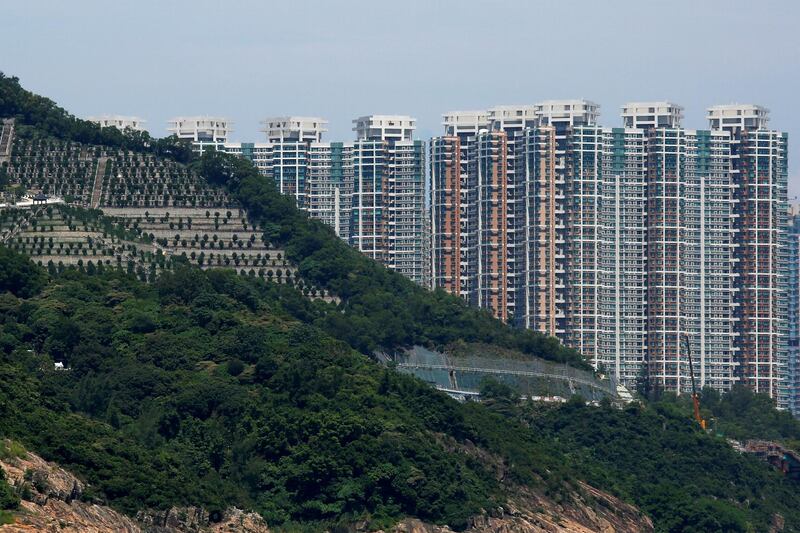Hong Kong’s notoriously unaffordable property prices have started to turn down.
In thinking about how bad the reversal may get, four words offer a useful guide: location, location, location; and size.
The real estate broker’s mantra holds as true for the Chinese city as for housing markets anywhere: Prices of homes in the most central districts will be more resilient than those in the suburbs. The distinguishing feature of Hong Kong is the premium on space. In a city where rising prices have encouraged developers to build ever tinier apartments, the relative undersupply of larger properties should ensure they hold up better in a slump.
Hong Kong property prices rose more than five fold between 2003 and the middle of this year, and the city is frequently ranked as the world’s least affordable market in global surveys. With the US-China trade war cranking up and the Federal Reserve raising interest rates, prices dropped in September and October. They’re down about 3 per cent from their August high, according to an index of second-hand home prices compiled by Centaline Property Agency. Most analysts, including those at CLSA and Jones Lang LaSalle, are now forecasting top-to-bottom declines of about 15 per cent.
The falls will be patchy, though.
Consider what happened during the last downturn in 2015-16. The decline in Hong Kong island was 16 per cent, according to data from the government’s Rating and Valuation Department. In the suburban New Territories, prices fell an average of 22 per cent, according to the department’s index.
Filtering by size shows a similar bifurcation: apartments measuring less than 430 square feet dropped about 12 per cent, while the loss for homes of 750 square feet to 1,075 square feet was 9 per cent. Also hit harder were the micro-apartments that developers had started building in order to keep homes within the reach of younger and less affluent buyers – as small as 128 square feet, or the size of a California garden shed.
There’s every reason to expect that pattern to repeat itself.
The supply of new housing has been greatest in the New Territories, according to JLL’s head of research, Denis Ma. In upmarket Hong Kong island districts such as the Peak and Mid-Levels, a lack of land for redevelopment restricts the supply of new homes.
Assessing how far and for how long the overall market will fall is a trickier proposition. Banks have started raising interest rates for the first time since the global financial crisis. Hong Kong rates track those in the US because of the city’s currency peg to the dollar, and the Fed has signalled that it will continue tightening.
A sagging stock market is also taking a toll on buyers’ confidence in Hong Kong, while the trade war will pressure an already slowing Chinese economy. That could impact Hong Kong’s unemployment rate, which at 2.8 per cent at the end of September was the lowest since before the Asian crisis in 1997.
_______________
Read more:
Dubai and Abu Dhabi rents in Q3 2018: All you need to know
Home sales soar 51 per cent in Singapore
_______________
To top it off, the influx of mainland Chinese buyers who helped to power the boom has slowed to a trickle. They accounted for just 1.2 per cent of sales in the first nine months of 2018, down from 4.5 per cent before the Hong Kong government introduced curbs on non-local buyers. A Chinese crackdown on capital outflows has also deterred purchases.
Developers, meanwhile, have scaled back sales of new projects and are offering discounts and sweeteners to attract buyers, a signal they accept the boom is over. At the same time, the government has brought in rules including a vacancy tax designed to prevent developers from hoarding apartments in the hope of higher prices.
Some investors may feel the correction is overdue. A 500-square foot apartment in Taikoo Shing, a middle-class enclave in the east of Hong Kong island, rose by 51 per cent or HK$3.1 million (Dh1.8m) between 2012 and 2017. That gain could pay for a monthly meal in a three-star Michelin restaurant for 87 years or two daily rides on the city’s subway for 960 years, CLSA analyst Nicole Wong has calculated.
As homeowners hunker down to wait out the slump, those sitting in cramped apartments far from the city centre have most to fear.






